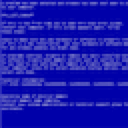
JD-GUI
#Security Testing#Malware Analysis
Tools for working with Android .dex and Java .class files, including dex-reader/writer, d2j-dex2jar, and smali/baksmali.
JD-GUI: A Standalone Graphical Utility for Java Source Code
JD-GUI is a standalone graphical utility that allows you to view the Java source code of '.class' files. With JD-GUI, you can easily browse the reconstructed source code, providing instant access to methods and fields.
How to Build JD-GUI?
> git clone https://github.com/java-decompiler/jd-gui.git
> cd jd-gui
> ./gradlew build generate : "build/libs/jd-gui-x.y.z.jar" "build/libs/jd-gui-x.y.z-min.jar" "build/distributions/jd-gui-windows-x.y.z.zip" "build/distributions/jd-gui-osx-x.y.z.tar" "build/distributions/jd-gui-x.y.z.deb" "build/distributions/jd-gui-x.y.z.rpm"
Requirements:
1. Keep all technical terms and concepts exactly as they are.
2. Make the language clearer and more accessible.
3. Keep the same content structure and format.
4. Do not add or remove any information.
5. Maintain similar length; if very small length of content, then add a little more content.
How to Launch JD-GUI
To launch JD-GUI, follow these steps:
1. Double-click on "jd-gui-x.y.z.jar".
2. For Windows users, double-click on the "jd-gui.exe" application.
3. For Mac OSX users, double-click on the "JD-GUI" application.
4. Alternatively, you can execute the command: "java -jar jd-gui-x.y.z.jar" or "java -classpath jd-gui-x.y.z.jar org.jd.gui.App" in your terminal.
How to Use JD-GUI
How to Use JD-GUI?
To open a file, navigate to the menu and select "File > Open File...".
To access recent files, go to the menu and choose "File > Recent Files".
You can also drag and drop files directly from your file explorer.


